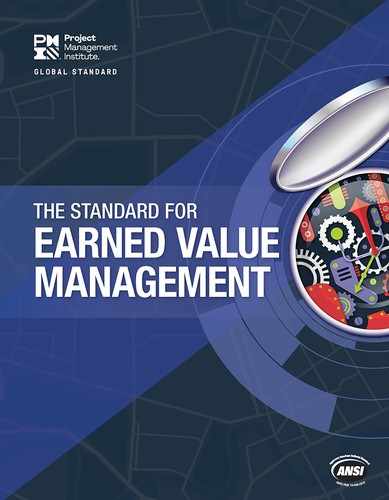Book Description
The Standard for Earned Value Management builds on the concepts for EVM described in the Practice Standard for Earned Value Management and includes enhanced project delivery information, by integrating concepts and practices from the
PMBOK® Guide – Sixth Edition and the Agile Practice Guide.
A central theme in this standard is the recognition that the definition for value in
EVM has expanded. While the term retains its traditional definition in terms of project cost, it embraces current practice by including the concept of earned schedule.
This standard also integrates hybrid methodologies that blend together historical
EVM concepts with the needs of the agile practitioner, all with an eye towards
aiding the project team in enhancing overall project delivery
Table of Contents
- THE STANDARD FOR EARNED VALUE MANAGEMENT
- The Standard for Earned Value Management
- Copyright
- Notice
- Table of Contents (1/2)
- Table of Contents (2/2)
- List of Figures and Tables
- CHAPTER 1: INTRODUCTION
- 1.1 Purpose of the Standard for Earned Value Management
- 1.2 Structure of This Standard
- 1.3 What is Earned Value Management (EVM)? (1/2)
- 1.3 What is Earned Value Management (EVM)? (2/2)
- 1.4 Basic EVM Concepts
- 1.5 Relationship with Portfolios and Programs
- 1.6 Benefits of the Application of EVM
- 1.7 Conditions Necessary for Successful EVM Implementation
- CHAPTER 2: INITIATING
- CHAPTER 3: PLANNING THE PROJECT
- 3.1 Overview
- 3.2 Developing the Project Management Plan (1/2)
- 3.2 Developing the Project Management Plan (2/2)
- 3.3 Developing Data and Integrating the Scope, Schedule, and Cost Baselines Considering Resources and Risks (1/3)
- 3.3 Developing Data and Integrating the Scope, Schedule, and Cost Baselines Considering Resources and Risks (2/3)
- 3.3 Developing Data and Integrating the Scope, Schedule, and Cost Baselines Considering Resources and Risks (3/3)
- 3.4 Setting the Performance Measurement Baseline (PMB)
- 3.5 Applying EVM in an Agile/Hybrid Environment
- CHAPTER 4: EXECUTING, MONITORING, AND CONTROLLING
- 4.1 Overview
- 4.2 Executing
- 4.3 Collecting Data
- 4.4 Managing Performance (1/5)
- 4.4 Managing Performance (2/5)
- 4.4 Managing Performance (3/5)
- 4.4 Managing Performance (4/5)
- 4.4 Managing Performance (5/5)
- 4.5 Stakeholder and Communication Considerations
- 4.6 Integrated Change Control
- 4.7 Process Improvement
- CHAPTER 5: CLOSING
- APPENDIX X1: DEVELOPMENT OF THE STANDARD FOR EARNED VALUE MANAGEMENT
- APPENDIX X2: CONTRIBUTORS AND REVIEWERS OF THE STANDARD FOR EARNED VALUE MANAGEMENT
- APPENDIX X3: APPLICATION OF EARNED VALUE MANAGEMENT (EVM) AT THE PORTFOLIO AND PROGRAM LEVELS
- APPENDIX X4: PERFORMANCE MANAGEMENT EXAMPLE
- X4.1 Implementing Earned Value Management to Manage Performance During the Design and Construction of a Smart Building
- X4.2 Initiating a Project with EVM (See Section 2)
- X4.3 Planning a Project Using EVM
- X4.4 Executing and Monitoring and Controlling a Project Using EVM (1/2)
- X4.4 Executing and Monitoring and Controlling a Project Using EVM (2/2)
- X4.5 Closing A Project Using EVM
- REFERENCES
- BIBLIOGRAPHY
- GLOSSARY
- INDEX (1/2)
- INDEX (2/2)
- The Standard for Earned Value Management
